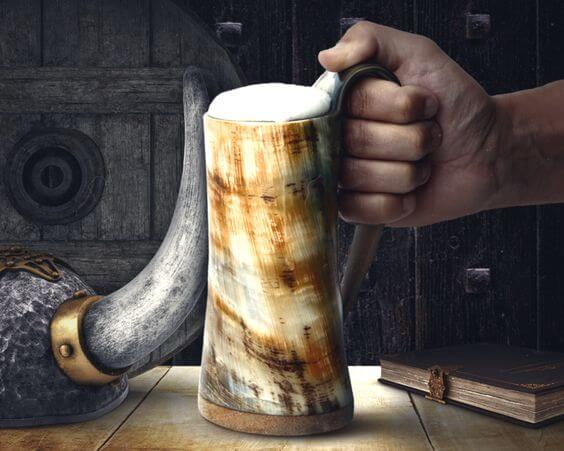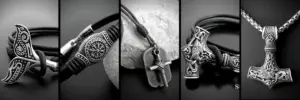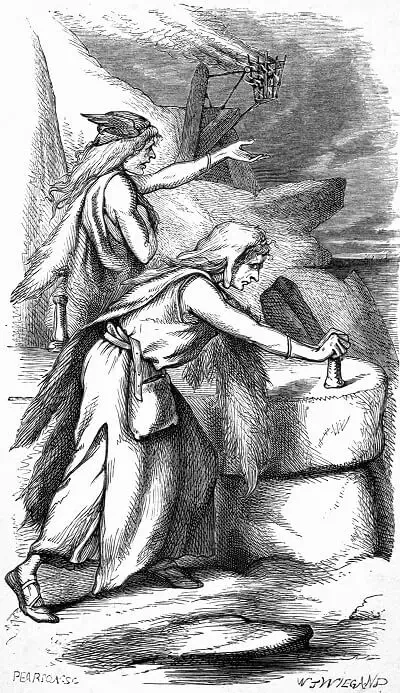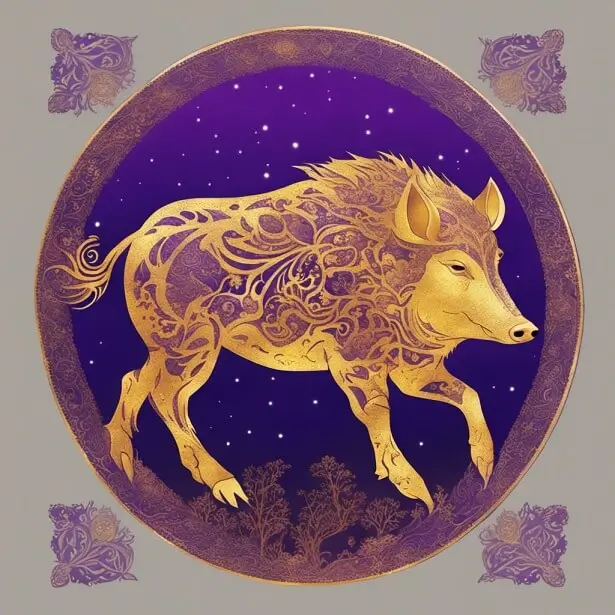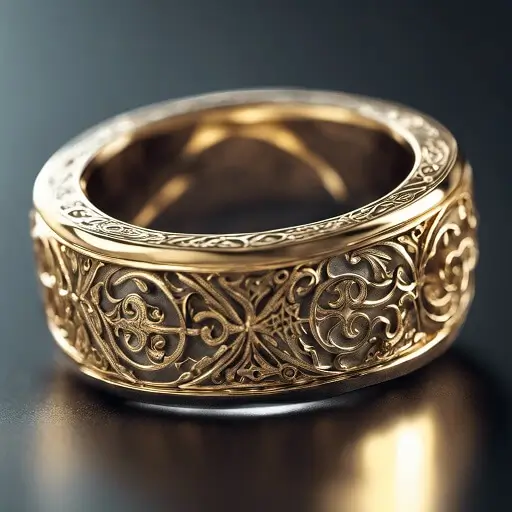Discover the fascinating history of Viking mead, its significance in Norse mythology, and its enduring legacy in modern times. Explore ancient tales, rituals, and the revival of this divine honey wine.
Viking mead, a honey wine with a rich history and deep cultural significance, has captivated the minds and palates of people for centuries.
Revered in Norse mythology as the “Nectar of the Gods,” mead played a central role in Viking rituals, festivities, and daily life.
In this article, we’ll delve into the fascinating world of Viking mead, exploring its mythical origins, the tales and traditions that surround it, and its enduring legacy in modern times.
Key Takeaways:
- Viking mead, made from fermented honey, held deep cultural and religious significance to the Vikings. It features prominently in Norse mythology as the “Nectar of the Gods.”
- Mead played a central role in Viking rituals, ceremonies, and feasting traditions. It was used to honor the gods, toast oaths, and foster community.
- Mead halls were important gathering places and status symbols in Viking society. They were locales for feasting, storytelling, and bonding.
- The drinking horn was an iconic vessel for consuming mead during Viking rituals and celebrations. Horns were elaborately decorated and signified wealth and hospitality.
- Myths like the Mead of Poetry and tales of gods like Ægir underscored mead’s divine origins and mythical potency in the Viking mindset.
- Today, Viking mead is being revived by modern brewers seeking to revisit ancient recipes and techniques. Viking cultural events also help preserve the legacy of mead.
- Norse mythology continues to inspire interest in mead, connecting it to an epic, storied past. Viking mead endures as a link to ancient beliefs, customs, and flavors.
The Ancient Origins of Mead
While revered in Norse culture, mead has origins tracing back thousands of years across ancient civilizations like China, Greece, and Egypt. Archaeological evidence shows mead production and drinking in these societies long before the Vikings. The Vikings likely adopted mead-making from interactions with other cultures, incorporating it into their own rituals and traditions.
Viking Mead the Nectar of the Gods
Mead, the sweet and potent honey wine, held a special place in Norse mythology. Considered the “Nectar of the Gods,” mead was believed to possess divine and transformative powers, as illustrated in the following tales:
The Mead of Poetry: A Tale of Wisdom and Transformation
The Mead of Poetry, also known as “Kvasir’s Blood” or “Óðrerir,” is a legendary mead in Norse mythology that bestows upon its drinker the gift of poetry and wisdom.
The story begins with the creation of Kvasir, the wisest of all beings, born from the saliva of the Æsir and Vanir gods as a symbol of their truce after a great war. Kvasir traveled the world, sharing his wisdom with mankind.
However, two dwarves, Fjalar and Galar, killed Kvasir and mixed his blood with honey, creating the Mead of Poetry.
They then murdered a giant, inviting the wrath of the giant’s son, Suttungr, who confiscated the mead as retribution. Suttungr hid the mead in the center of a mountain, guarded by his daughter Gunnlöð.
Ægir: The Norse God of Brewing and Mead
Ægir, a giant and a god of the sea, was also known as the Norse god of brewing and mead. Ægir was famous for his incredible brewing skills, and his underwater hall was renowned for hosting magnificent feasts for the gods. Ægir’s wife, Rán, helped him with his brewing and hosting duties.

Ægir
As the god of brewing, Ægir was attributed with the knowledge and expertise to craft the finest meads, beers, and ales, which were served in his hall and considered the best in all the Nine Worlds.
The gods would gather at Ægir’s hall to enjoy his brews, fostering camaraderie and merriment among them.
Odin’s Quest for the Mead of Poetry
Odin, the Allfather and the chief of the Æsir gods, sought the Mead of Poetry to acquire its power and wisdom. Disguised as a mortal man named Bölverkr, he ventured to the land of the giants to retrieve the mead.
Through a series of cunning tricks and challenges, Odin convinced Suttungr’s brother, Baugi, to help him reach the mead hidden within the mountain.

Odin
Odin then transformed himself into a snake and slithered through a small hole that Baugi had drilled into the mountain. Once inside, he took on the form of a charming man and seduced Gunnlöð, who allowed him to drink the Mead of Poetry over the course of three nights.
Odin drank all the mead, transforming into an eagle and flying back to the realm of the gods. As he approached, he spat the Mead of Poetry into waiting containers.
However, some mead spilled during his flight, which became the mead accessible to ordinary people, while the gods and the worthy retained the divine mead that Odin had brought back.
These stories from Norse mythology emphasize the importance of mead as a divine and powerful substance that could bestow wisdom, inspiration, and transformation upon those who consumed it, reflecting its central role in Viking culture and religious beliefs.
Mead Halls: The Epicenters of Viking Society
Mead halls played a significant role in Viking society, serving as centers for social gatherings, feasts, and celebrations. These great halls were where Vikings would come together to share stories, boast about their exploits, and bond over mead, the cherished honey wine.
Mead’s Enduring Significance Through the Middle Ages
Though mead declined as beer and wine rose in popularity during the Middle Ages, it retained its mythical prominence in Norse lore. Tales of Odin and magical meads like the Mead of Poetry continued capturing imaginations well after the Viking era. This cemented mead’s enduring ritual and narrative significance even as its consumption lessened.
The Importance of Mead Halls in Viking Life
Mead halls were the heart of a Viking settlement, providing a space for the community to gather and engage in various social activities.
They were often built by chieftains and kings to showcase their wealth, power, and hospitality. Mead halls were places where important decisions were made, disputes were settled, and alliances were formed.
In Viking society, the mead hall was more than just a place to drink; it was a venue for storytelling, music, and poetry.
Skalds, the Viking poets, would recite their verses, recounting tales of gods, heroes, and legendary battles to entertain and inspire their audience. Mead halls thus played a crucial role in preserving the oral traditions and cultural memory of the Vikings.
Heorot: The Legendary Mead Hall from Beowulf
Heorot, the mead hall featured in the Old English epic poem Beowulf, is perhaps the most famous example of a mead hall from the Viking Age. Constructed by King Hrothgar, Heorot was a symbol of his power and prosperity, a place where his warriors could gather to feast, drink, and listen to the tales of their heroic deeds.
However, Heorot was plagued by the monstrous Grendel, who terrorized the mead hall and its inhabitants. The hero Beowulf arrived to save Heorot, ultimately defeating Grendel and his vengeful mother.
The story of Heorot exemplifies the significance of mead halls in the Viking Age and their role as centers of community, culture, and heroism.
Feasting and Celebrations in the Mead Halls
Mead halls were the primary venues for feasting and celebrations in Viking society. Feasts were held to mark important occasions, such as religious festivals, weddings, funerals, and the return of a successful raiding party.
These gatherings allowed the community to come together, reinforcing social bonds and sharing in the spoils of their endeavors.
At the heart of these feasts was the consumption of mead, which flowed freely, symbolizing the host’s generosity and wealth.
Drinking mead was a communal activity, often accompanied by toasts, boasting, and oaths sworn over the drinking horn.
These customs were essential for fostering camaraderie, loyalty, and a sense of belonging among the Viking people.
In conclusion, mead halls were vital to the social fabric of Viking society, serving as places for communal gatherings, feasting, and the preservation of cultural traditions.
Mead, the cherished honey wine, played a central role in the activities of these halls, enhancing the bonds between the members of the community and connecting them to the divine world of Norse mythology.
Viking Mead in Rituals and Festivities
Mead held a special place in the rituals and festivities of the Viking Age, serving as a bridge between the mundane and the divine.
It played a significant role in religious ceremonies, feasts, and various cultural practices, reinforcing the deep connection between the Vikings and their gods.
Mead as a Strategic Tool in Viking Warfare
In battle, Vikings treated mead with great tactical importance. It was sometimes shared with enemies to reduce tensions and build trust pre-battle. But mead was also used as bait – barrels left to intoxicate foes before ambush attacks. This reveals how in warfare, mead held both cultural and practical significance.
Mead in Religious Ceremonies and Offerings
Mead was an important element in Viking religious ceremonies and offerings, used to honor the gods and seek their favor.
During blóts, or sacrificial rituals, mead would be poured or sprinkled over altars, sacred objects, and even participants as a means of consecration and communion with the divine.
Mead offerings were also made to the gods to ensure a successful harvest, good fortune in battle, or prosperity in trade.
In some rituals, mead was also consumed by the participants as a means of achieving a heightened state of consciousness, enabling them to communicate with the gods or their ancestors.
The divine origins of mead in Norse mythology further underscored its significance in these religious practices.
The Role of Viking Mead in Feasts
Mead played a central role in Viking feasts, where it was consumed in large quantities to celebrate victories, honor the gods, or mark important occasions.
Toasting the gods with mead was a customary practice during these feasts, as it was believed to invoke their presence and blessings.
Participants would often drink mead from a communal vessel, such as a drinking horn, and offer toasts to the gods, their ancestors, or fallen comrades.
These toasts served to express gratitude, seek protection, or request guidance from the divine realm. Mead, with its mythical and divine associations, was the perfect conduit for these ritualistic expressions of devotion and reverence.
The Drinking Horn: A Symbol of Viking Mead Culture
The drinking horn was an iconic symbol of Viking mead culture and a common vessel for consuming mead during feasts and celebrations. Made from cattle or goat horns, these vessels were often elaborately decorated with carvings, metalwork, or inlays, showcasing the craftsmanship and artistic skill of their makers.
Drinking horns were not only functional but also held symbolic significance in Viking society. They represented the wealth and status of their owners, as well as the hospitality and generosity of the host during feasts.
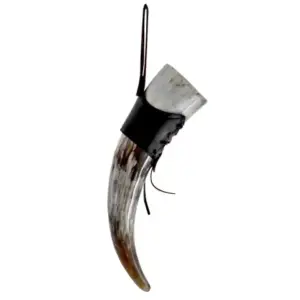
Drinking horns were used in various rituals, such as swearing oaths, toasting the gods, or sealing agreements, imbuing these acts with a sense of solemnity and sacredness.
In summary, mead was an essential component of Viking rituals and festivities, reflecting its divine origins and deep cultural significance.
Whether consumed in religious ceremonies, toasted to the gods during feasts, or sipped from an ornate drinking horn, mead was a symbol of the intimate connection between the Vikings and their gods, as well as the central role of this honey wine in their daily lives and celebrations.

Sif Goddess holding a drinking horn
The Legacy of Viking Mead in Modern Times
The rich history and cultural significance of Viking mead continue to inspire and influence modern times. From the revival of mead and Viking-inspired brews to festivals and events celebrating Viking heritage, the legacy of mead endures and thrives in contemporary society.
The Potential Health Benefits of Mead
In addition to its rich history, mead may offer some health benefits when drunk moderately. As a fermented drink, mead contains probiotics that aid digestion and gut health. It also provides antioxidants that reduce inflammation and cell damage. These effects underscore mead’s unique status as both a storied cultural drink and functional beverage.
The Revival of Mead and Viking-Inspired Brews
In recent years, there has been a resurgence of interest in mead and Viking-inspired brews, as craft brewers and enthusiasts seek to explore and revive traditional mead-making techniques.
This has led to the creation of a wide variety of mead styles, often incorporating local honey, herbs, fruits, and spices to produce unique and flavorful concoctions.
The popularity of mead has also been fueled by a growing fascination with Viking history and culture, particularly through the success of television shows, movies, and literature that explore Norse mythology and the Viking Age.
Many modern breweries and meaderies have embraced this connection, creating Viking-themed meads and packaging that pay homage to their ancient inspiration.
Viking Festivals and Mead Tasting Events
Viking festivals and mead tasting events have become increasingly popular around the world, providing opportunities for people to immerse themselves in the history, culture, and flavors of the Viking Age.
These events often feature reenactments, traditional crafts, music, and, of course, mead tastings, allowing attendees to experience a taste of Viking life.
Mead competitions are also becoming more common, showcasing the creativity and skill of modern mead makers and encouraging the continued development and refinement of mead as a beverage.
These events help preserve and promote the rich legacy of Viking mead, connecting people with a fascinating and enduring aspect of human history.
Norse Mythology’s Influence on Mead’s Enduring Popularity
The captivating stories and characters of Norse mythology have played a significant role in the enduring popularity of mead.
The tales of gods, heroes, and magical mead, such as the Mead of Poetry, continue to capture the imagination of modern audiences, imbuing mead with a sense of mystique and intrigue.
As a result, mead has become more than just a beverage; it is a symbol of a storied past and a connection to a time when gods and heroes walked among mortals.
This connection to Norse mythology, coupled with the revival of mead making and a growing interest in Viking culture, ensures that the legacy of Viking mead remains alive and well in modern times.
Viking Mead Q&A
What is Viking Mead?
Viking Mead is a traditional alcoholic beverage made from fermented honey, water, and sometimes additional flavorings such as herbs, spices, and fruits. It was a popular drink among the Vikings and played a significant role in Norse culture, mythology, and social life. Mead was consumed during feasts, celebrations, and rituals, and was often associated with the gods and heroes of Norse mythology.
What does Viking Mead taste like?
Viking Mead has a unique taste that combines the natural sweetness of honey with the complexity of fermentation. The flavor can range from sweet to semi-sweet or dry, depending on the amount of honey used and the fermentation process. The taste of Viking Mead can also vary depending on any additional ingredients, such as herbs, spices, or fruits, which can impart a wide range of flavors, from floral to fruity or even spicy notes.
What did Vikings put in Mead?
At its core, Viking mead was a simple concoction made by diluting honey with water and fermenting it to produce alcohol. The Vikings primarily used honey, water, and yeast to create this cherished beverage, frequently incorporating additional flavorings to enrich the taste and develop unique mead variations. These supplementary ingredients encompassed a range of fruits, such as berries or apples; herbs like heather or yarrow; and spices such as cinnamon or cloves. Some mead recipes even featured hops, contributing a mild bitterness and aiding in the mead’s preservation.
What is Viking Blood Mead?
Viking Blood Mead, also known as “blóðmjöð” in Old Norse, is a modern interpretation of a traditional mead that includes the addition of various fruits, herbs, or spices to create a unique flavor profile. The term “Viking Blood” is primarily used for marketing purposes and does not necessarily indicate a specific historical recipe.
One popular version of Viking Blood Mead is a type of melomel, which is a mead made with the addition of fruit. In this case, cherries are commonly used to provide a rich, deep red color and a tart, fruity flavor to the mead. The vibrant red color of the mead, combined with its strong, bold flavor, is likely the inspiration for the name “Viking Blood.”
To make Viking Blood Mead, follow a traditional mead recipe, but add cherries (or another fruit of your choice) during the fermentation process. The fruit can be fresh, frozen, or even a fruit juice or concentrate. Make sure to adjust the amount of honey and water to account for the additional sugar content from the fruit. The fermentation and aging process will remain the same as with a traditional mead.
It’s important to note that the concept of “Viking Blood Mead” is not necessarily an authentic historical representation of what the Vikings would have consumed but rather a modern interpretation and celebration of their mead-making traditions.
What is Norse Mead called?
In Old Norse, mead was often referred to as “mjöðr” or “mjød.” Norse mead, or Viking Mead, is a term used to describe the traditional mead brewed and consumed by the Vikings, which was typically made from fermented honey, water, yeast, and sometimes additional flavorings such as herbs, spices, or fruits. The mead played an important role in Norse mythology and was believed to have divine origins, particularly in the story of the Mead of Poetry.
What role did mead play in Viking celebrations?
Mead was central to Viking celebrations and rituals. It was consumed during weddings, festivals, and ceremonies as a way to honor gods, commemorate achievements, and bring communities together. Drinking mead had deep social and religious significance.
How was mead consumed by Vikings?
Vikings drank mead from communal vessels, like drinking horns or bowls, during feasts and gatherings. Specific customs governed mead consumption, like making ritual toasts to gods or oaths before drinking. Consuming mead together strengthened social bonds.
What references to mead exist in Norse literature?
Mead is referenced in sagas and poems like the Poetic Edda. The legendary Mead of Poetry, granting eloquence, is described as being made from the god Kvasir’s blood. This highlights mead’s mythological connections and roles as a source of wisdom and inspiration.
Did Vikings use mead strategically in battle?
Yes, Vikings treated mead tactically in warfare. They sometimes shared it with enemies to reduce tensions, but also used it as a trap by leaving mead barrels to intoxicate foes before ambushing them.
Is it possible to make Viking mead at home?
Yes, mead can be made at home using basic ingredients like honey, water, and yeast. There are recipes and guides available to help with the multi-week fermentation process required to produce mead (see next question).
How to brew mead like a Viking?
Brewing mead like a Viking requires a few simple ingredients and a bit of patience. Here’s a step-by-step guide to creating your own Viking-style mead:
Ingredients:
- 3 to 4 pounds of honey (preferably raw, unprocessed honey)
- 1 gallon of water (spring or distilled water is best)
- Yeast (wine or champagne yeast is preferred, but ale yeast can also work)
- Optional: fruits, herbs, or spices for additional flavoring
Equipment:
- Large pot or brewing kettle
- 1-gallon glass or food-grade plastic fermenting vessel with an airlock
- Long spoon or paddle for stirring
- Sanitizer (like Star San or Iodophor)
- Funnel
- Thermometer
- Hydrometer (optional, for measuring sugar content)
- Siphon and tubing
- Bottles and caps or corks for bottling
Step 1: Sanitize
Sanitize all of your brewing equipment using a sanitizer like Star San or Iodophor, following the manufacturer’s instructions. Good sanitation is crucial to prevent any unwanted bacteria or wild yeast from spoiling your mead.
Step 2: Prepare the honey mixture
In a large pot or brewing kettle, heat the water to around 100°F (38°C). Remove the pot from the heat source and gently stir in the honey until it’s completely dissolved. This mixture is called the “must.”
Step 3: Cool and transfer the must
Allow the must to cool to around 70°F (21°C). You can speed up the cooling process by placing the pot in an ice bath. Once cooled, carefully pour the must into your sanitized fermenting vessel using a funnel.
Step 4: Add yeast
Once the must has reached the appropriate temperature, pitch (add) the yeast according to the manufacturer’s instructions. Gently stir the yeast into the must.
Step 5: Optional flavorings
If you want to add fruits, herbs, or spices for additional flavor, now is the time. Ensure they are clean and sanitized before adding them to the fermenting vessel.
Step 6: Fermentation
Attach the airlock to your fermenting vessel to prevent oxygen and contaminants from entering while allowing carbon dioxide to escape.
Store the vessel in a dark, cool place with a stable temperature between 60°F to 70°F (15°C to 21°C). Fermentation can take anywhere from 2 to 6 weeks, depending on the yeast and temperature. The airlock’s bubbling will slow down significantly or stop when fermentation is complete.
Step 7: Racking
Once fermentation is complete, use a sanitized siphon and tubing to transfer the mead into a clean, sanitized secondary fermenting vessel, leaving behind the sediment (called “lees”) at the bottom of the first vessel. This process is called “racking.” Attach the airlock to the secondary fermenting vessel and let the mead age for another 4 to 12 weeks, or even longer for more complex flavors.
Step 8: Bottling
After the aging process, siphon the mead into sanitized bottles, avoiding the sediment at the bottom of the fermenting vessel. Cap or cork the bottles and store them in a cool, dark place.
Step 9: Enjoy!
Allow your mead to age in the bottles for at least a few months, or even up to a year, to develop its full flavor profile. Once it has aged, pour a glass, and enjoy your homemade Viking mead!
Remember, brewing mead is an art, and experimenting with different ingredients and techniques will help you create a unique and delicious mead that reflects your personal taste and pays homage to the Viking tradition. Cheers!
Shop Viking Jewelry
Are passionate about Vikings or Norse Mythology?
Finding the ideal piece of Viking Jewelry can be challenging and time-consuming, especially if you lack inspiration or don’t know where to look.
Surflegacy, has you covered. We have a wide range of Handmade Jewelry in various styles, shapes, colors, and materials, to accentuate your Viking spirit and look. Do not hesitate to visit our selection HERE
Whatever you wear, you’ll find the ideal trendy piece to complement your wardrobe. Our jewelry is designed to be worn every day, no matter where you go or what season is. Are you ready to step up your wardrobe game?

